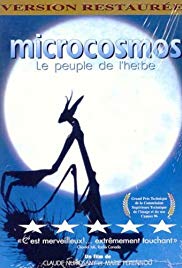Part 1
Molecules are formed when atoms combine with each other to create the substances that can be recognized by the senses, i.e., matter that people can see, touch, smell, or feel. Most molecules are made up of combination of atoms of different elements, as in the case of water, in which two atoms of hydrogen combine with one atom of oxygen to form the water molecule H2O. When atoms combine to form molecules, they build bonds that keep the atoms together unless there is an external force that breaks these bonds. (Sometimes atoms form single-atom molecules in monatomic substances, as in the case of noble gases like helium or neon. On other occasions, atoms of one element combine only with other atoms of the same element in mono-element molecules. Examples of mono-element molecules are O2 (oxygen gas) and O3 (ozone).
The bonds between the molecules are called “intermolecular forces”. Their strength determines the physical state of the molecule at various conditions of pressure and temperature. For example, water is liquid at room temperature, while nitrogen needs to be below -195.79 °C (-320.33 °F) to be liquid.
An effective way to introduce young students to the states of matter is to ask four or more of them to stand in a circle joining their hands. If the teacher gently moves the circle of children from one part of the classroom to the other, still retaining the circular shape, they end up in a different place, but keep the same positions with respect to each other. This represents solid matter, e.g. a block of ice. For this piece of ice, the students are the water molecules, at fixed positions with respect to each other.
If the students are asked to release each others’ hands and if the group is gently pushed across the classroom, they will arrive at the other end still together, but most likely in a different configuration from the one they had at the beginning. They have mixed and moved with respect to each other. This represents a liquid; in our analogy, the ice block has melted into liquid water.
The last step in this exercise is to let the students walk away from each other. They are no longer together. This would represent the gaseous state of matter, in our analogy, water vapor. In a gas, intermolecular forces are very weak or non-existent.
A further step would be transforming the gas into plasma, by breaking up the atoms. Obviously, this could not be simulated with the students, but it could be explained to them that in order to get the group to represent plasma—the fourth state of matter—their bodies would need to be taken apart. — For a deeper explanation of intermolecular forces, see Intermolecular Forces from the Chemistry Department at Purdue University.
Part 2
The surface of solids is impenetrable until a sufficiently large pressure is exerted on it, for example with a knife, or it is broken into pieces. In both cases the bonds between molecules becomes severed. In the case of gases, it is also easily understandable that they do not form a continuous lump of matter, as the molecules are practically independent from each other, i.e. the intermolecular bonds are very weak or non-existent.
The case of liquids is interesting because the molecules seem to move freely, but at the same time stick together somehow, as is shown in the segments of Microcosmos referred to in this lesson plan. Water drops keep a quasi-spherical shape when sitting on a leaf or even while being handled by ants.
So, what is the force at play here? It is called “surface tension.” Molecules at the surface of a liquid are subject to intermolecular forces of attraction, but only towards neighboring molecules within the liquid. (See Surface Tension from About.com.) The net force acting on them is towards the bulk of the liquid, away from the surface. This results in a tendency in the liquid to adopt a shape with the smallest possible number of molecules on the surface. If pressure is applied on the surface, it is deformed and its area increases. The surface will push back against this deformation because of the attractive intermolecular forces. The liquid seeks to return to its state of equilibrium (i.e. to a state of minimum surface area). By pushing back this way the surface behaves like a membrane that can resist a certain weight before breaking, such as a paper clip or a light coin gently placed on the surface. See Science Magic 2 – Floating Paperclip!.
How is this related to the tendency to adopt a spherical shape? Surface tension, like any other force, tends to act as long as it is allowed to (objects fall until they are stopped by the floor, opposite poles of magnets tend to get together until or unless something stops their motion). Recall that the force imbalance behind surface tension tries to minimize the number of molecules at the surface. Surface tension pushes the liquid together until the liquid adopts the shape with the smallest possible surface for its volume. The geometrical shape with the smallest possible surface for a given volume is a sphere.
This is also seen in the images from astronauts in space handling liquids in absence of gravitation: there seems to be a force that “pulls” the molecules together and therefore the liquid into a spherical shape. This allows astronauts do interesting experiments with water in zero-gravity as in Waves, Bubbles and Reactions in a Free Sphere of Water.
In the presence of gravity, that force also pulls the molecules in the same way, not letting it “spread out” over the surface it is resting on. The weight of the liquid deforms the sphere into a more flattened shape, as seen in the drops from which the ants drink in Microcosmos.


